August 20, 2017
Martha O'Kennon
Amazing week! For the first time I can remember, the goldenrod and the asters both came into bloom within a couple of days of each other. And this year my favorite hosta bloomed so beautifully with its reddish-purple flowers! Still hot and humid most of the day, but if you get up and out early it's quite comfortable. Here are the hosta (just one spike), a spray of goldenrod, and one aster flower with a tiny green sweat bee.
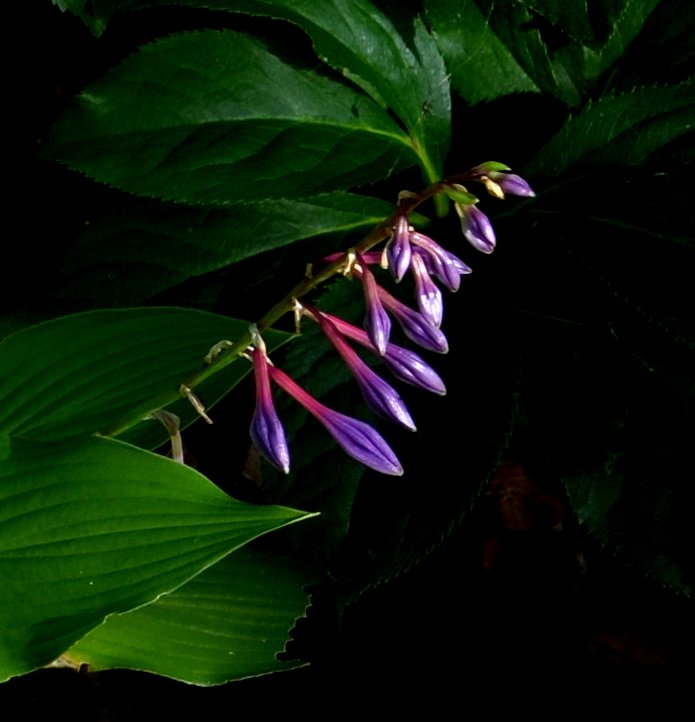
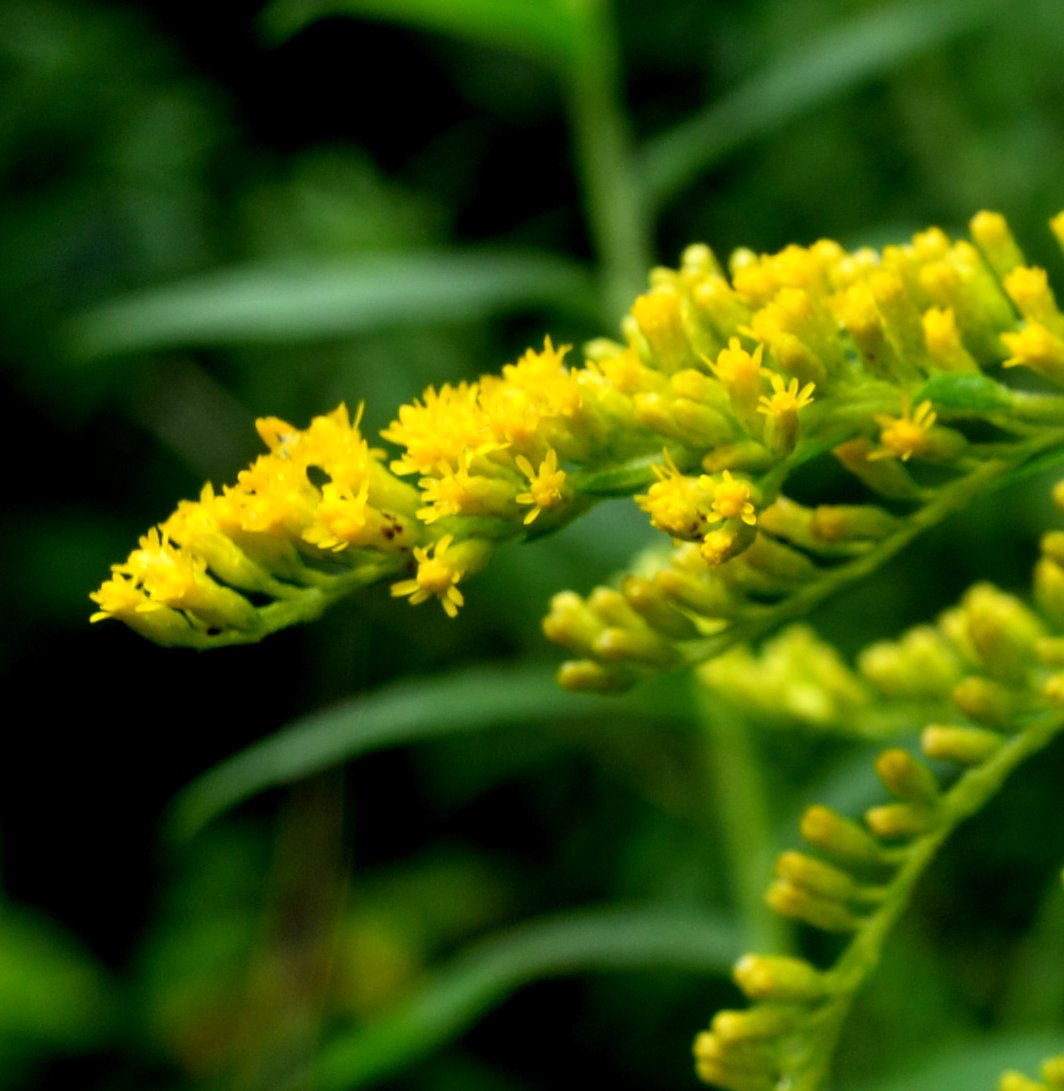
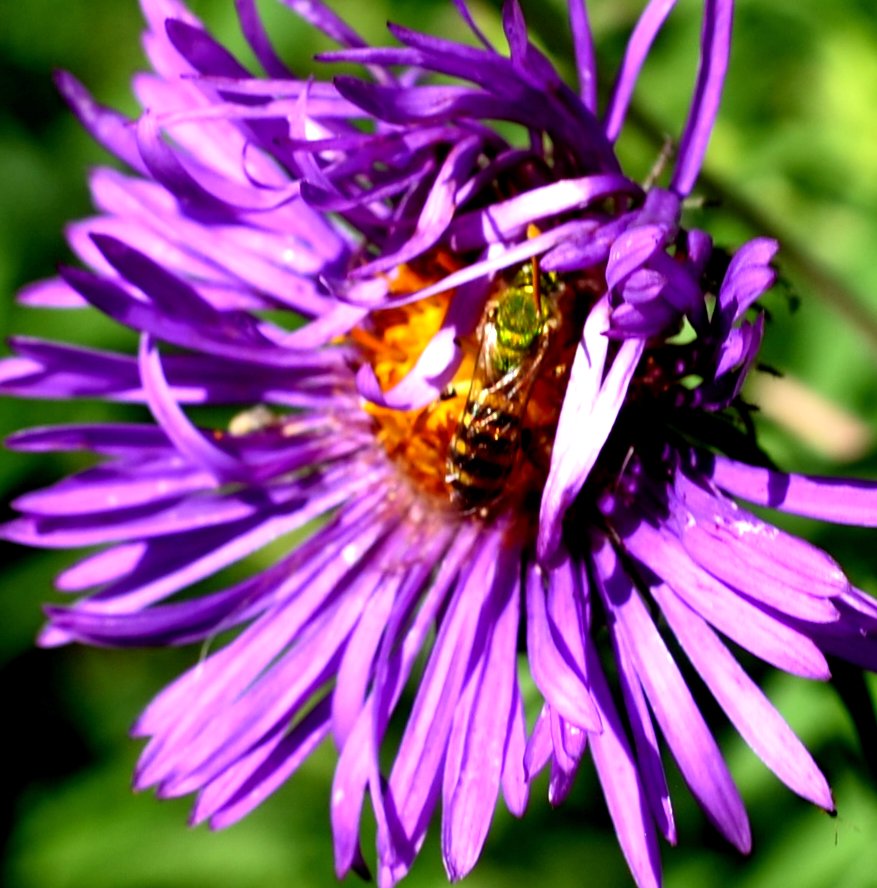
Remember that there is information in the name of the file for each image. You can see it by mousing over the image - look at the lower left of the screen. Or you can click on the image to get to the (usually) larger image. Then the info is displayed in the address line above. Sometimes the second click will actually display a different view of the original image.
This first barklouse is one we've been seeing for ages! But the second one, which appears to be Trichadenotecnum alexanderae, is the first one of its kind I've seen this year. Intricate for a creature so small (about 1.5 mm)! Last is a bee on the Queen Anne's Lace.
,
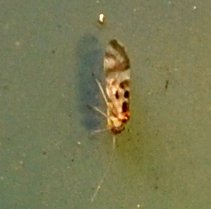
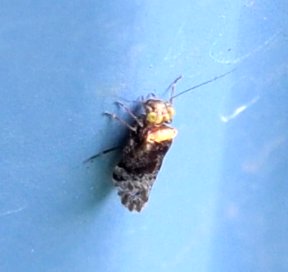

Here we have another green sweat bee - in the volunteer Black-eyed Susan, an Asian Lady Beetle in the goldenrod. Must be that more creatures visit Susan when she is blooming. And finally, a beaded beetle, which always reminds me of one of the leaf-miners.

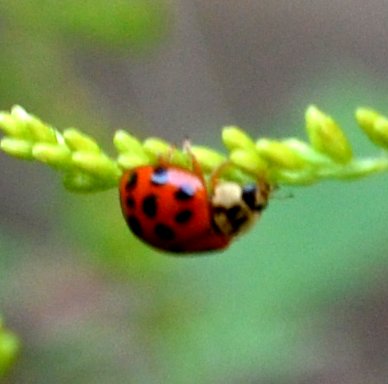
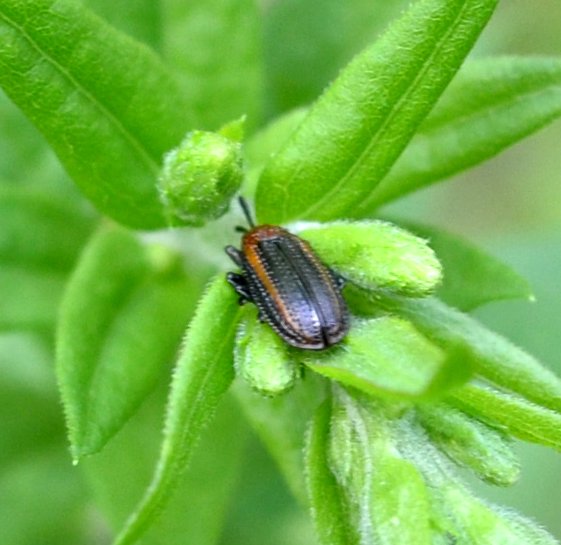
This black beetle was a new one to me, but it is officially a Black Blister Beetle. Here are two views of it. Note December 25, 2020: This Black Blister Beetle (Epicauta pennsylvanica) has enjoyed a taxon swap to Black Aster Bug (Epicauta pensylvanica). So its name is changed and so is the spelling of its species name. Hopefully calling it a Bug doesn't make it one. Next is the Goldenrod Soldier Beetle, but on an aster plant.
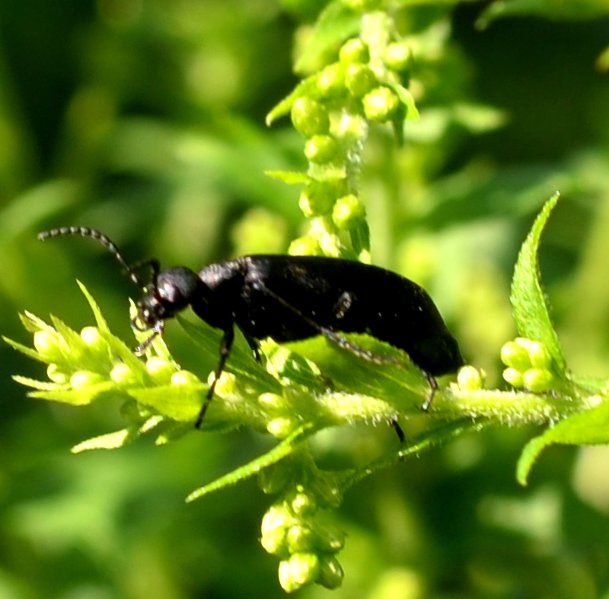
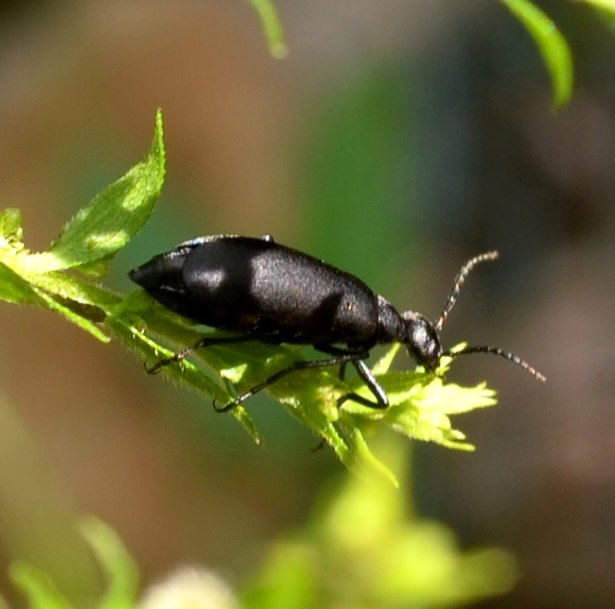
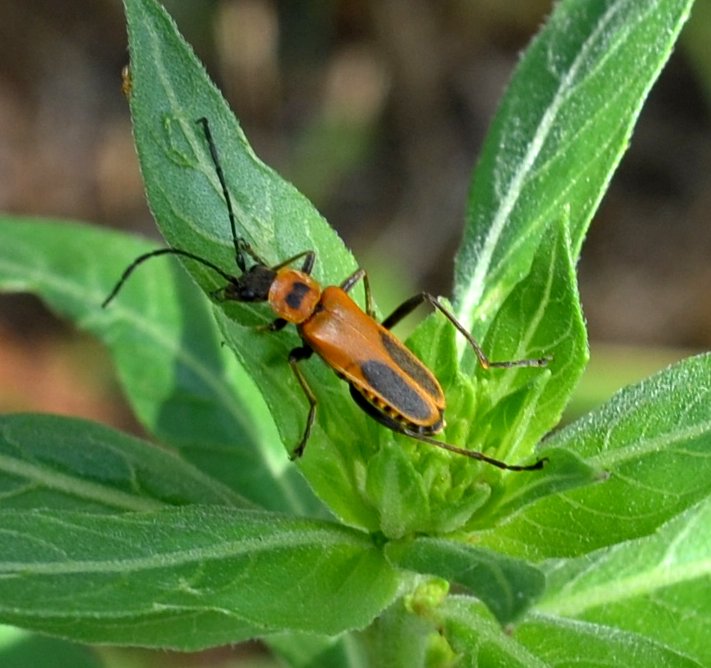
If you recall the tiny baby leaf-footed bugs from earlier in the spring-summer(first image), this is what they look like now (second and third images),
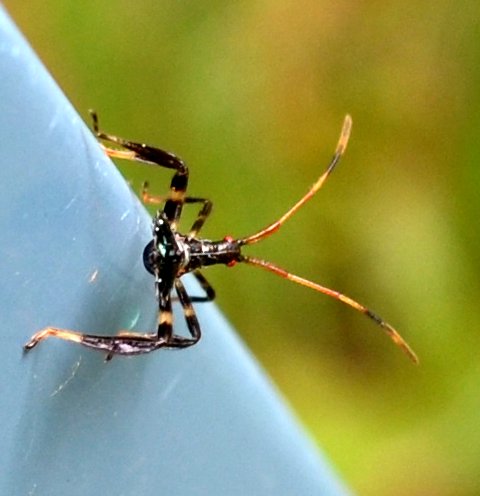

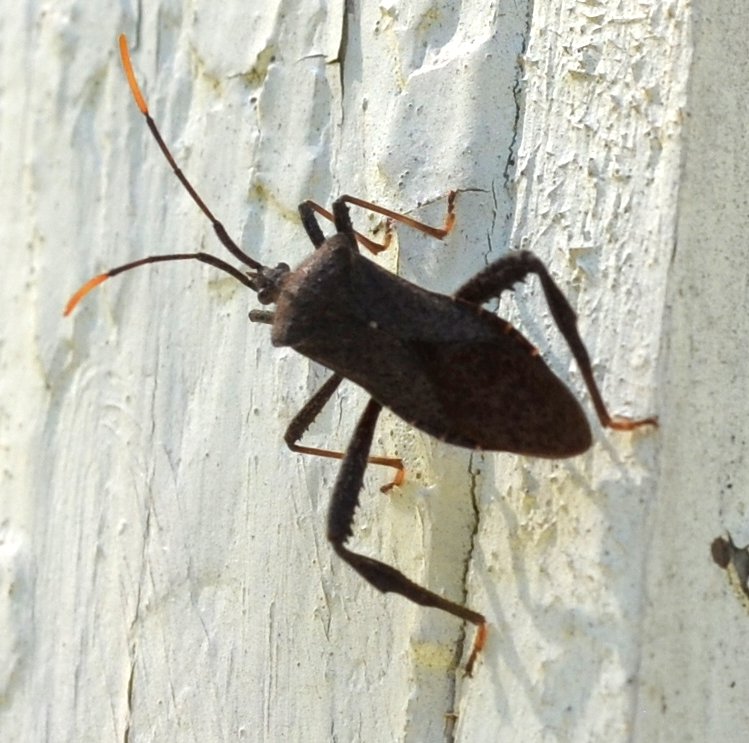
Here is a new bug for me, then a Lygus plant bug. Finally that reddish stink bug we've been seeing a lot of lately.
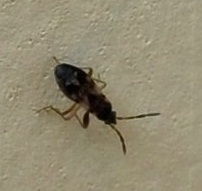
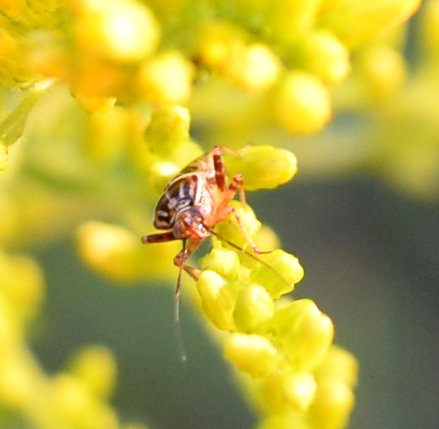
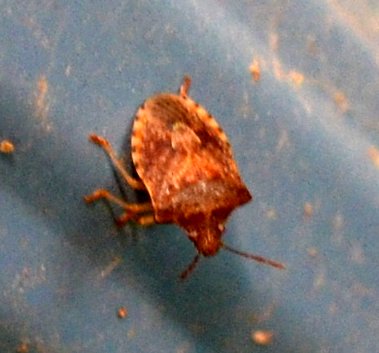
We had quite a few leafhoppers and spittlebugs this week and a half. But I must point out that the candy-striped two are really red and green and red and blue, lest you think the green is caused by its green background.



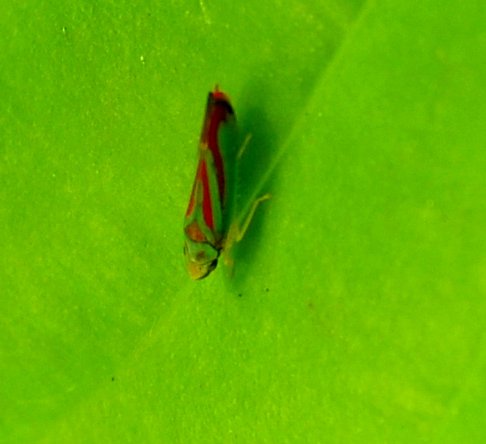
More leafhoppers.
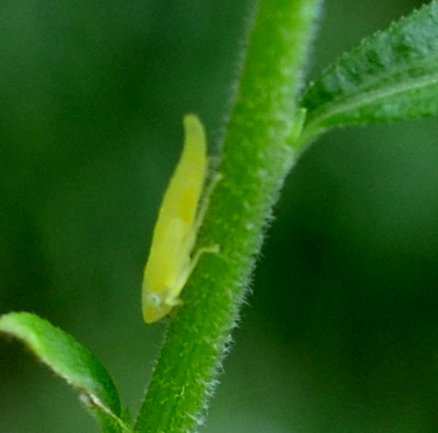
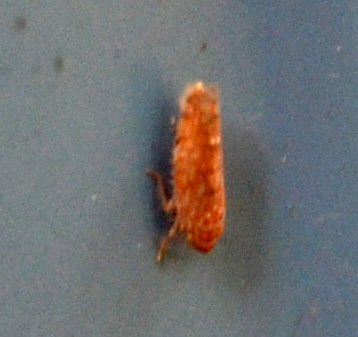
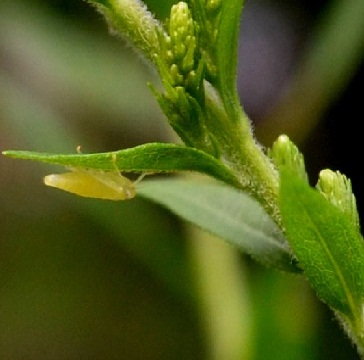
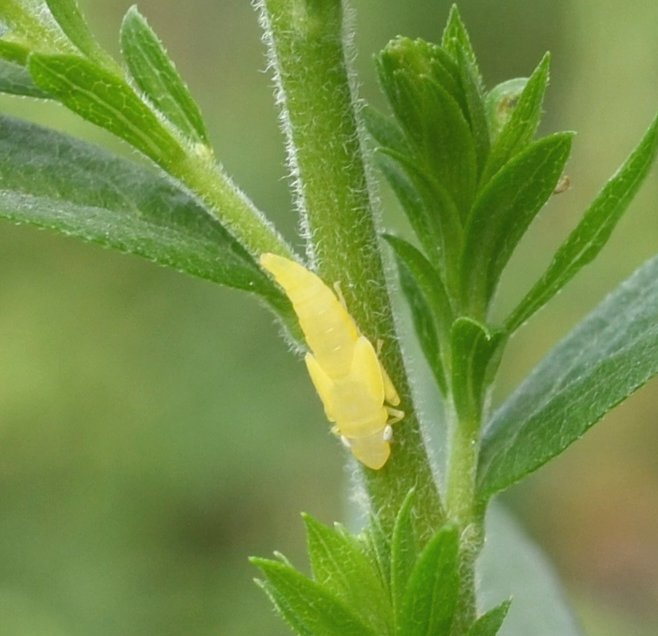
The first two of these little bugs are spittle bugs. The first one here is the Meadow Spittle Bug. There is an even tinier critter near the left edge of the picture on the next spray of goldenrod down. The brown one is probably a spittle bug, but don't quote me. Third is a Northern Planthopper. Next is the little stilt bug that we met recently, and the last is the one I thought was a crane fly last year. It is in fact a predatory bug. If you look for the third pair of legs, you might miss it until I tell you that the place where the thin antennae are is really this animal's head and the pair of parallel appendages are held tightly together and pointing forward. I hope this makes sense.
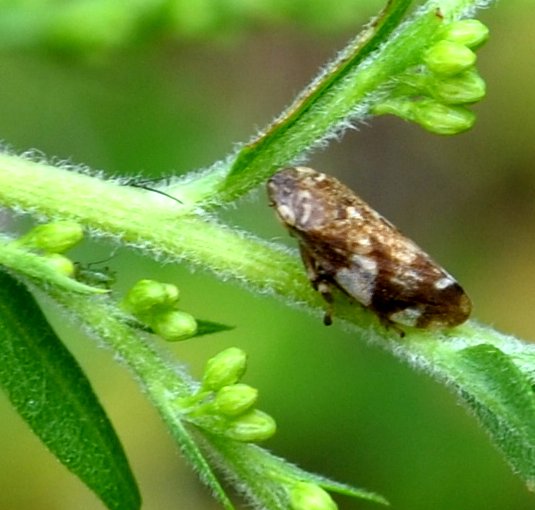
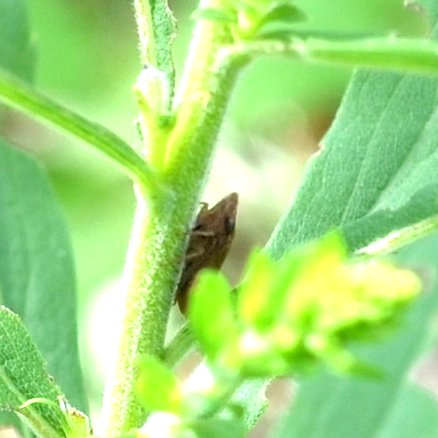
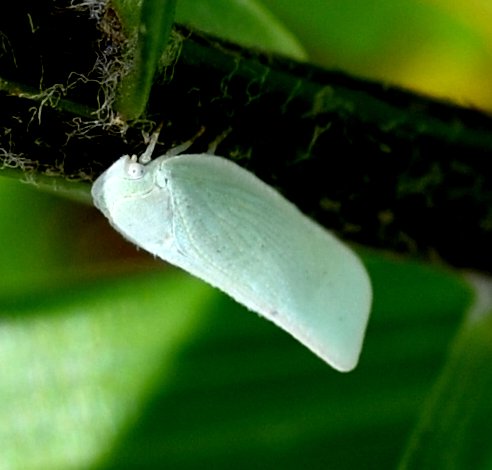
Next is the little stilt bug that we met recently, and the last is the one I thought was a crane fly last year. It is in fact a predatory bug. If you look for the third pair of legs, you might miss it until I tell you that the place where the thin antennae are is really this animal's head and the pair of parallel appendages are held tightly together and pointing forward. I hope this makes sense.
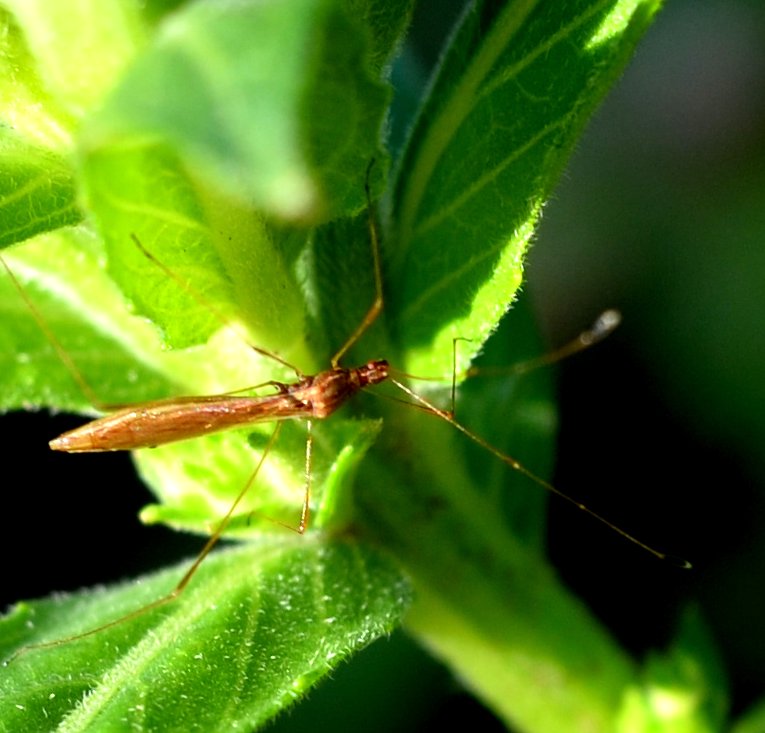
 8 15 17 1.jpg)
Here are two centipedes and a short damselfly. It looks like the narrow-winged American bluet we saw on May 28 of this year.
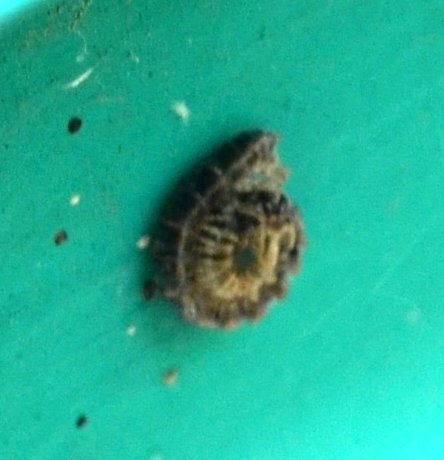
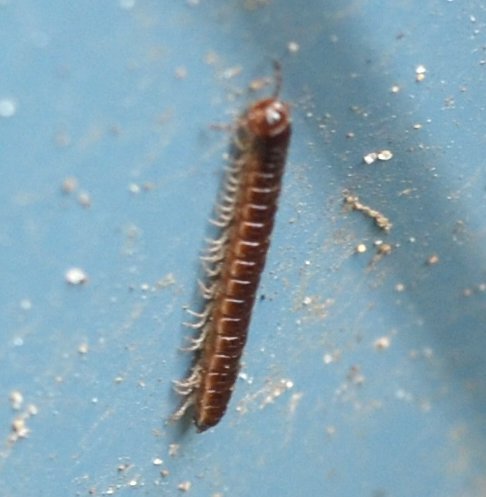

These two dragonflies are either juvenile Autumn Meadowhawks or a different species. We should soon be seeing the much larger Autumn Meadowhawks. Make sure to compare these pictures with the bigger ones. Last, a defunct earwig.
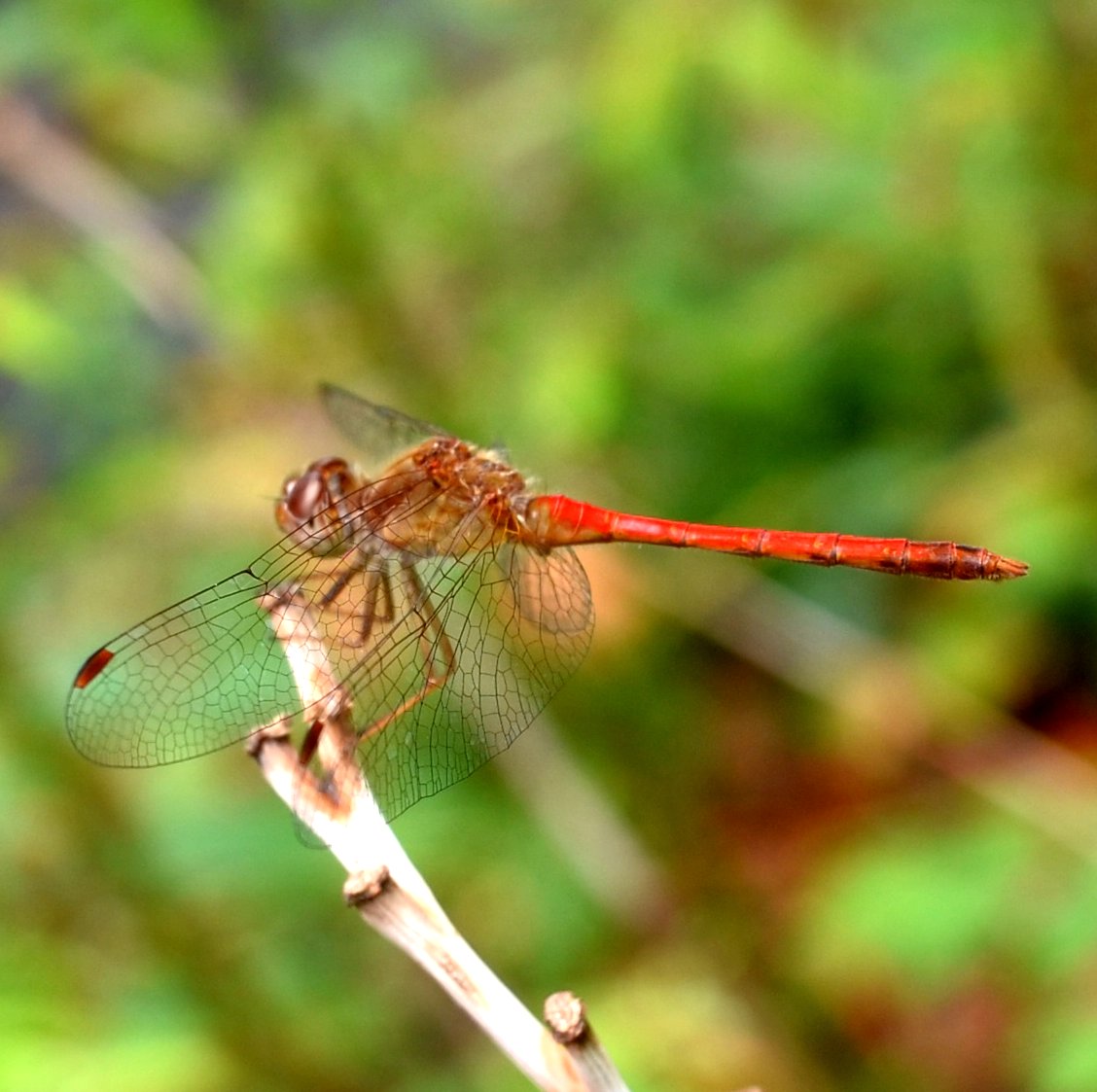
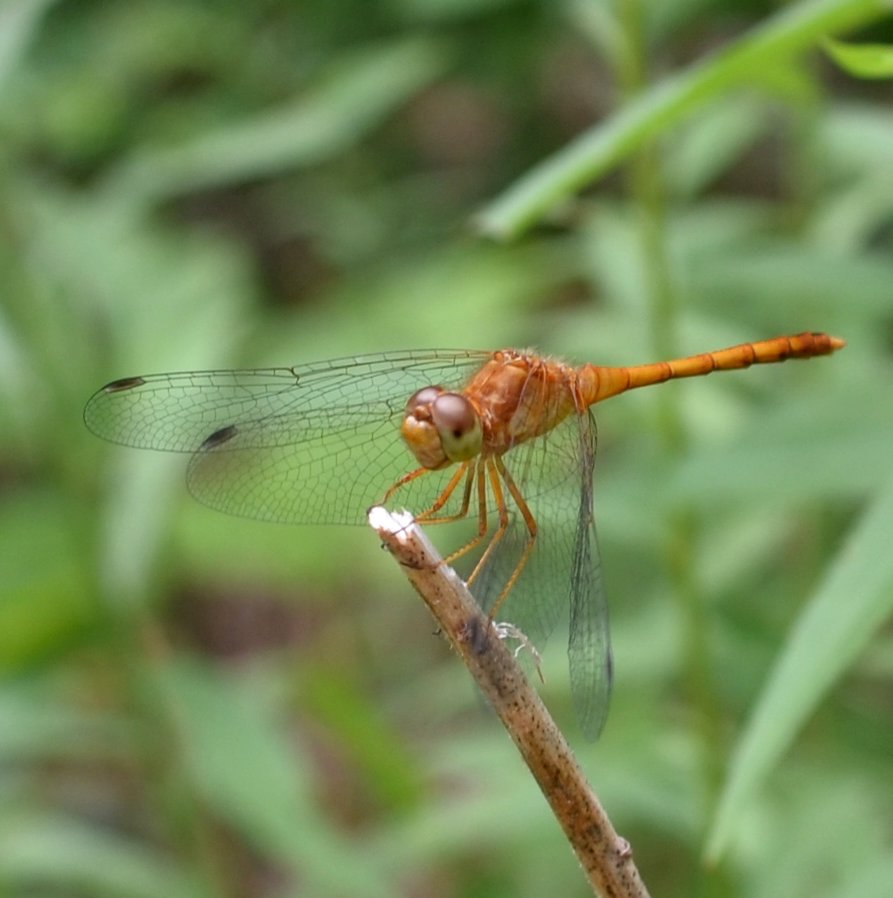
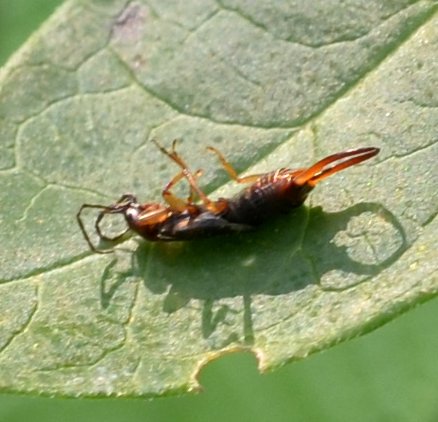
Here is a fish picture for your enjoyment. When you click on the picture, you should get a larger picture,and then you can repeat that to see the fishes at their closest. I did not see the little green frog until I was about to finish taking pictures. (Look at the top right of this picture). Froggy's yellow lips are now green, and now it really looks like a Green Frog. The last image is of an older baby American Toad. You can't tell the size from this picture, but it is about 2-3 times as big as the ones that have just come out of the pond.
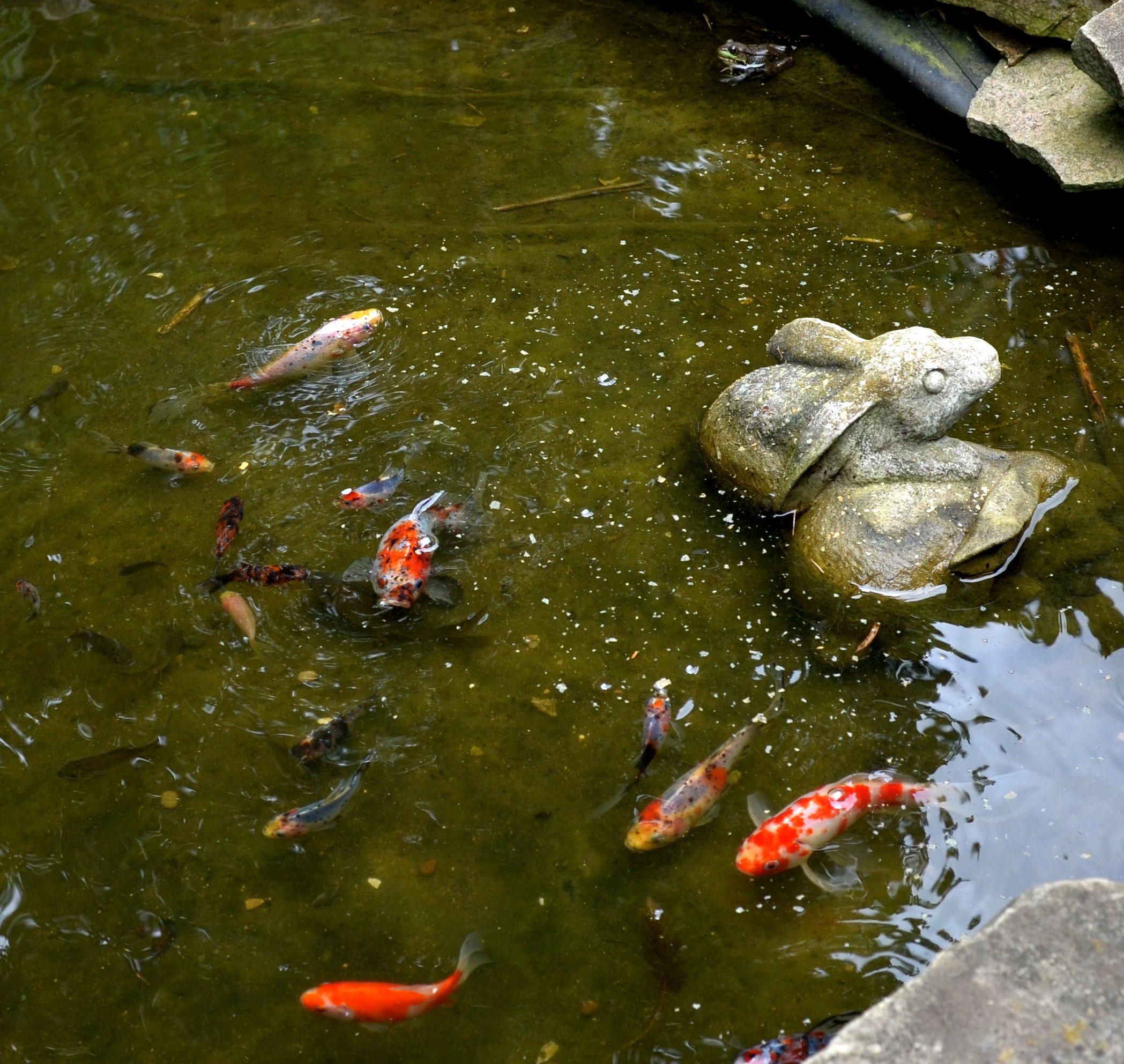
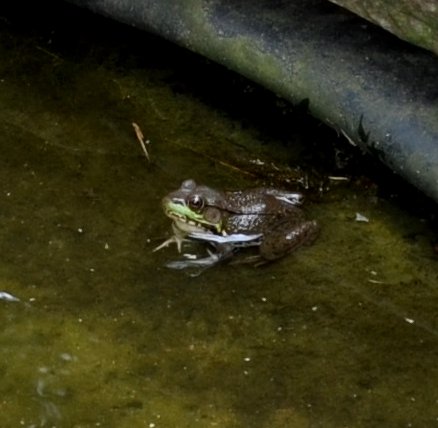
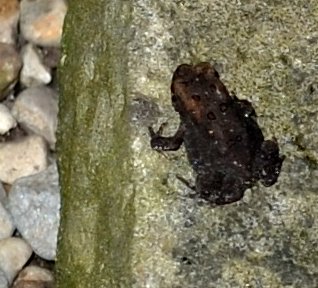
Here are some flies that I hadn't seen in some time if ever. Images 1 and 2 are of a small dark fly. Next is a huge horse fly. And last is a red-eyed long-legged fly.
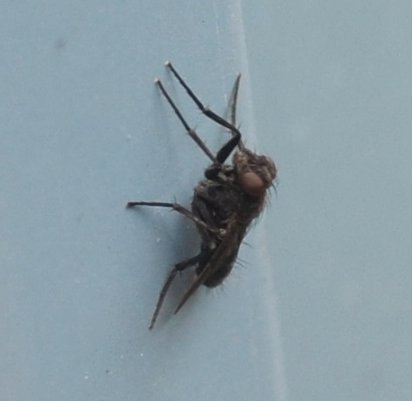
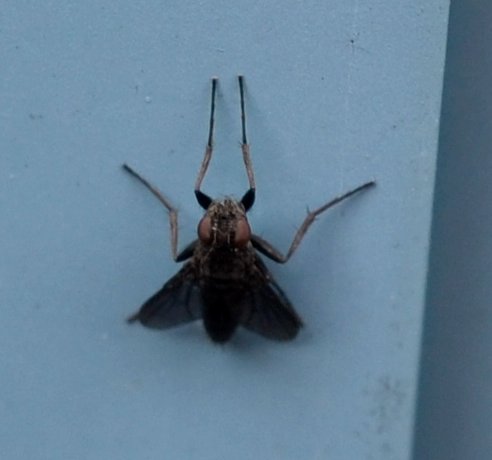
 8 12 17 3.jpg)
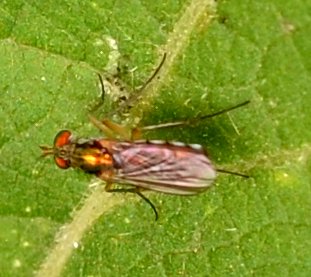
Here are some midges. The greenish one is so delicate. And I can't leave out the moth fly - it has been here every day for quite a while.
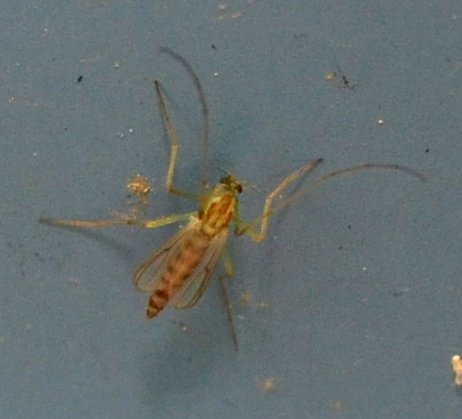
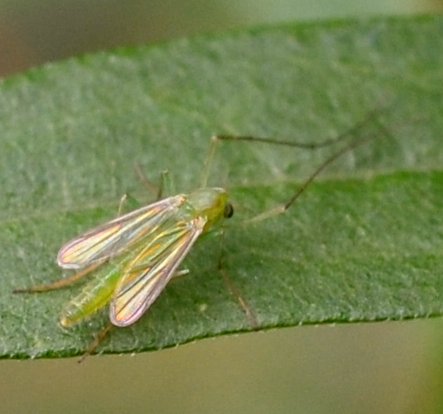
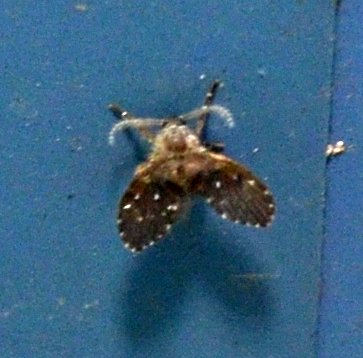
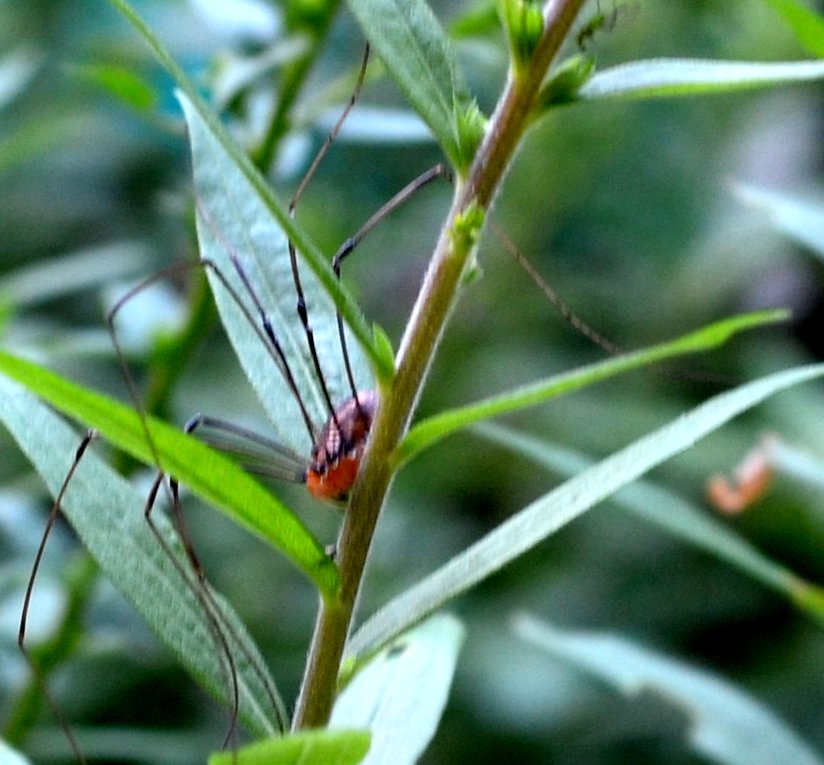

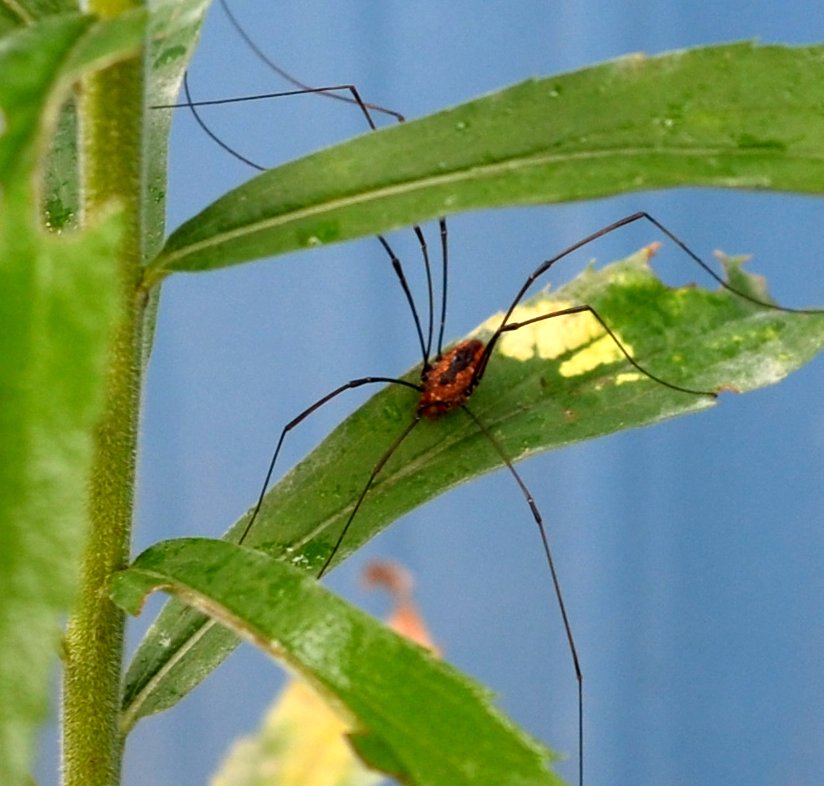
.jpg)
Here are a couple of little lonesome creatures. A Short-winged Green grasshopper, a larva of some kind movin' on down the sidewalk, and a scorpionfly. You may ask, why didn't you put the scorpionfly with the other flies? And then I would have to admit, back when I saw my first scorpionfly, I thought it was actually a kind of fly. Well, it wasn't. It is its own kind of thing and not a member of the fly order but the order Mecoptera.
 8 17 17 1.jpg)
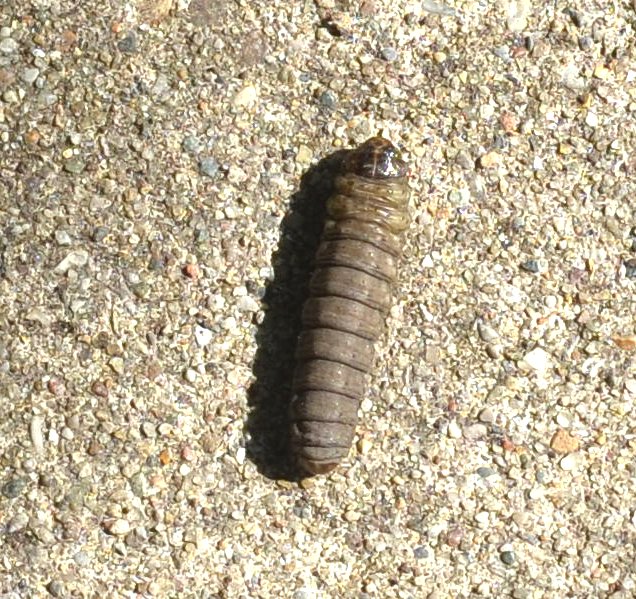
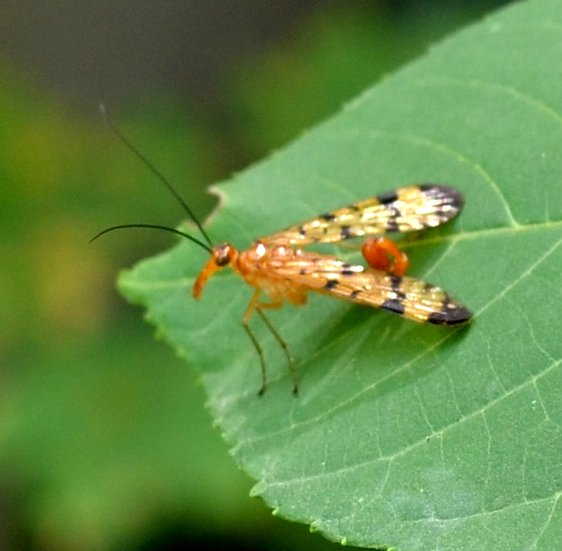 .
.
And here are some moths.
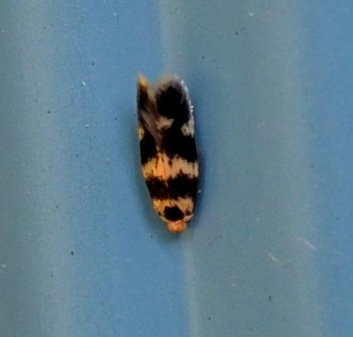
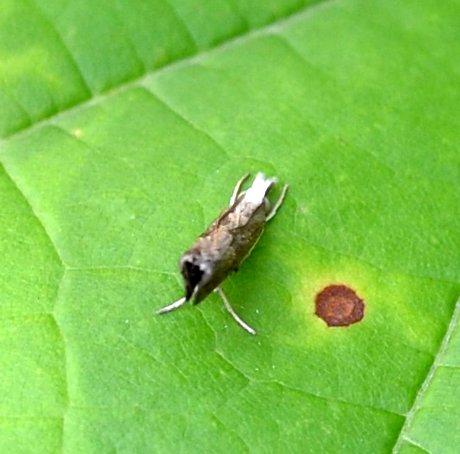
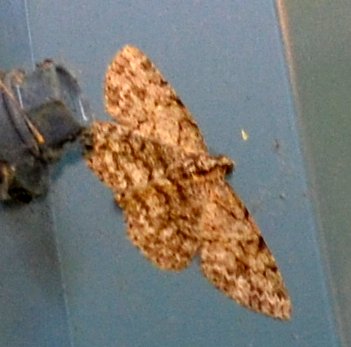 .
.
A flower break! I bet you thought I would never get to the flowers! This is a phlox I got long ago. I think it wanted more light than it has gotten in my yard! My friend Dorothy gave me a start of the second pretty flower, and the last is a tall common primrose about to pop out a blossom or two!
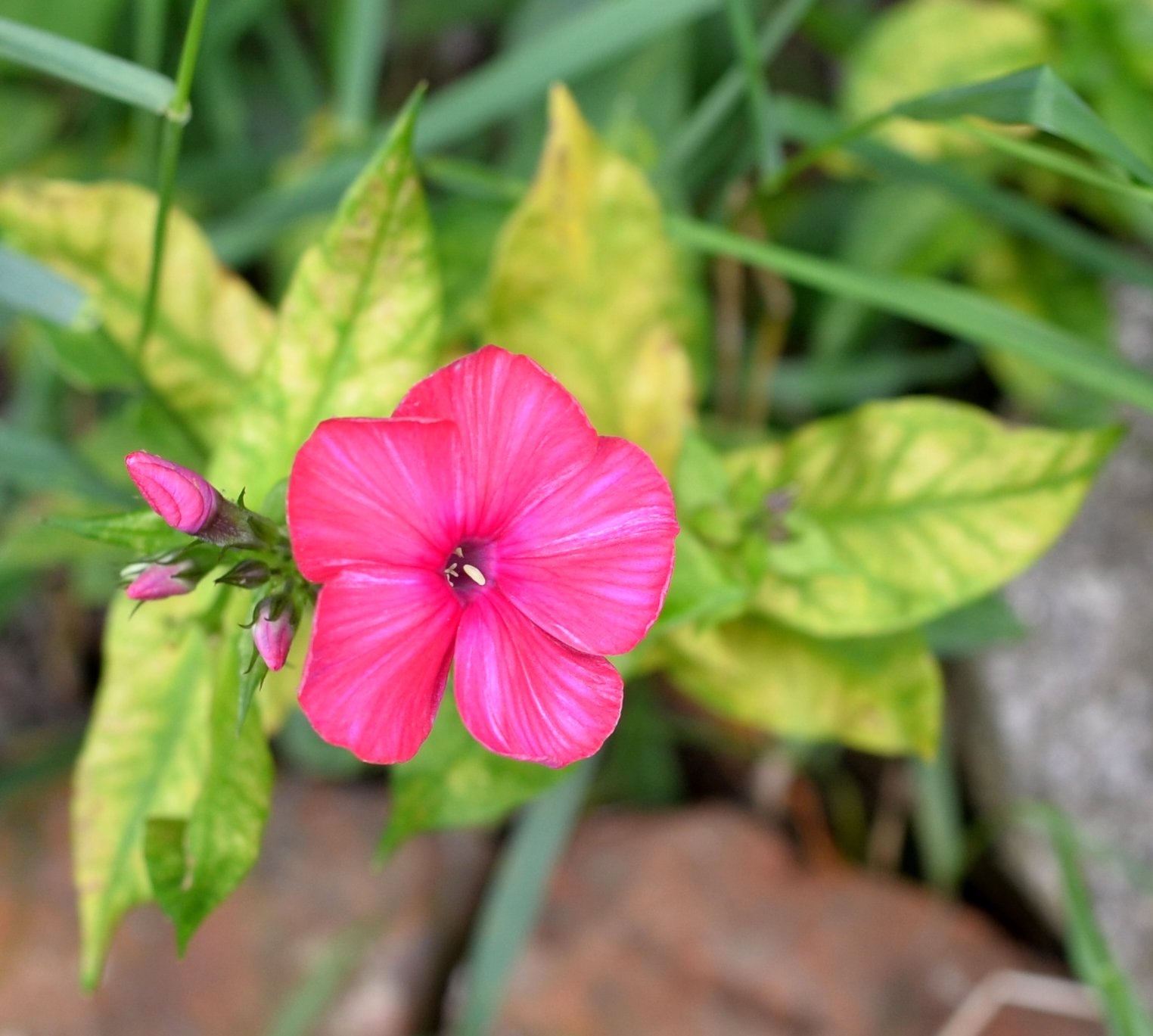
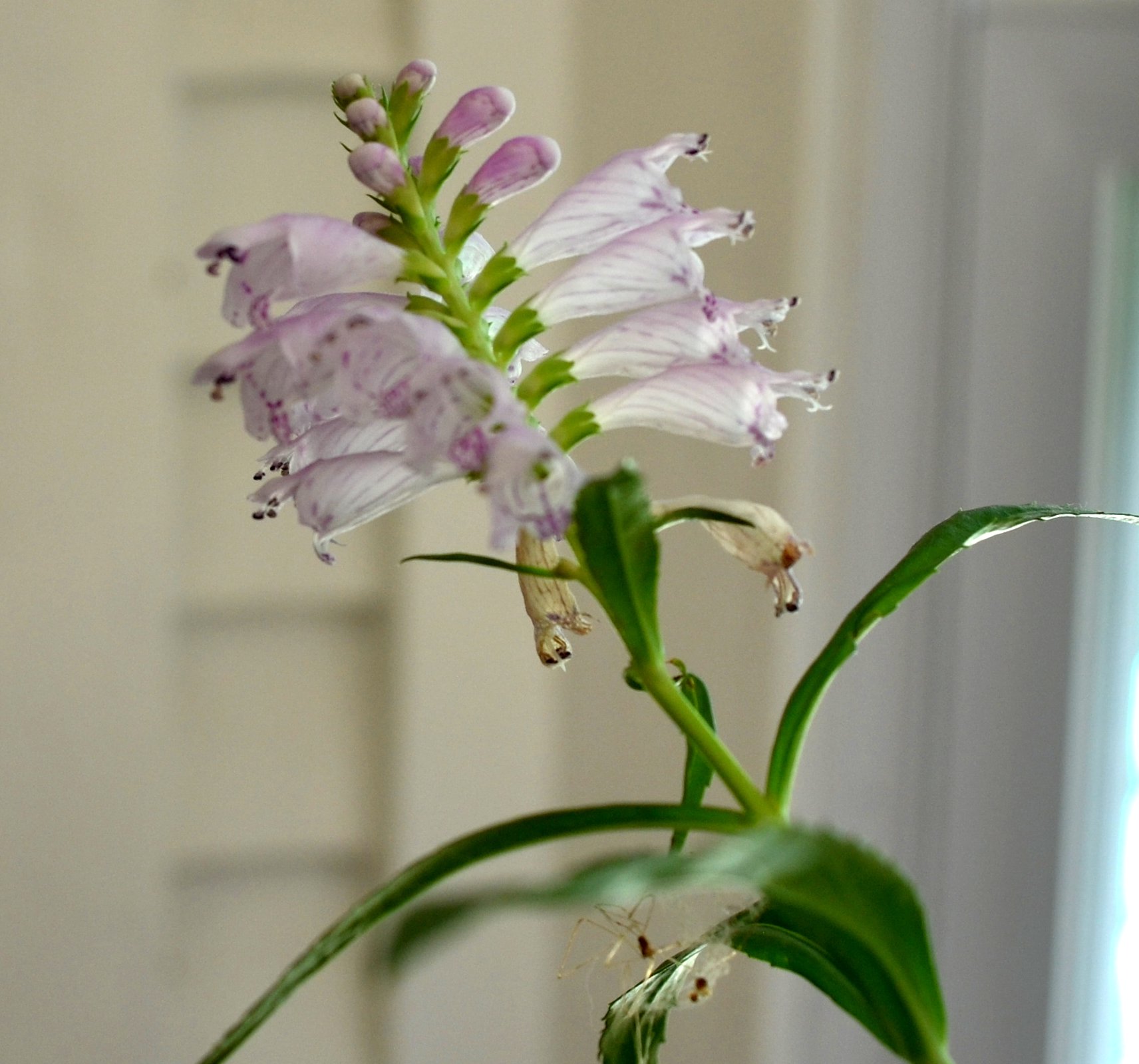
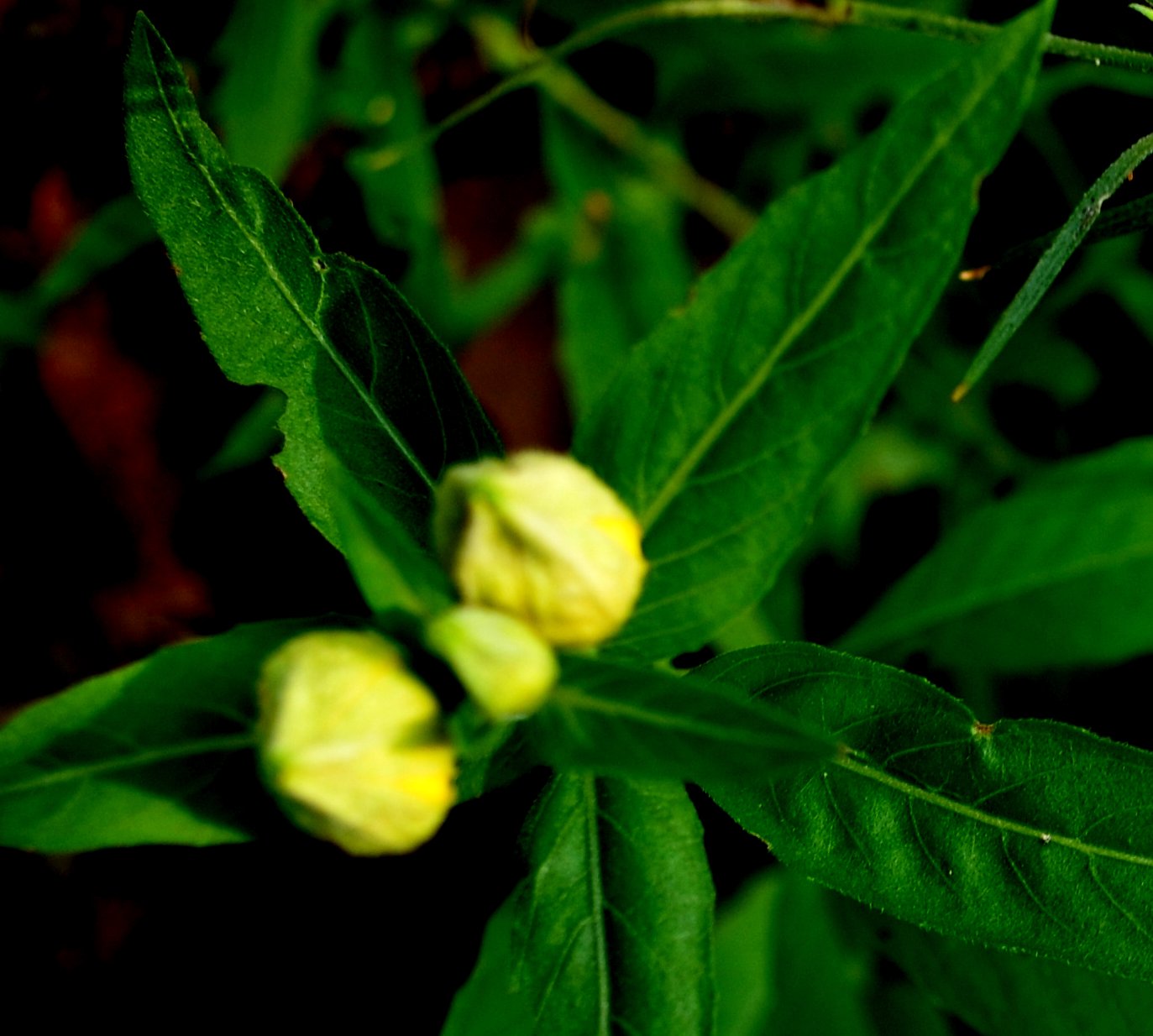
The spiders are active now. This next one I really thought was a spider, despite its having only 3 pairs of legs. But now it seems to be a kind of bug or nymph of a bug. The second one is the well-named Common House Spider and is visible almost every week of the year (non-winter). This beautiful red one is a male. Probably the most common but hard to see are the tiny Crab Spiders. This is a northern one, and the last is a Goldenrod Crab Spider. It's hard to tell sometimes because both of the last two spiders can change colors when they land on something colored differently from what their colors are now.
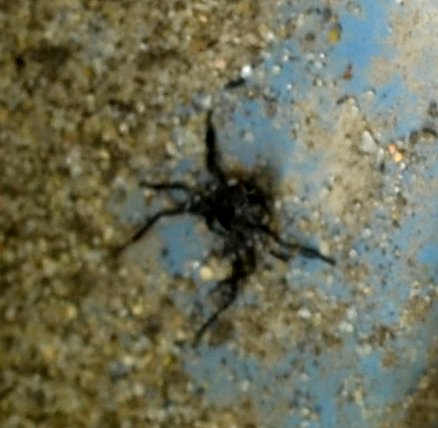
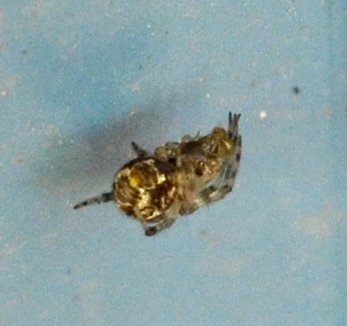
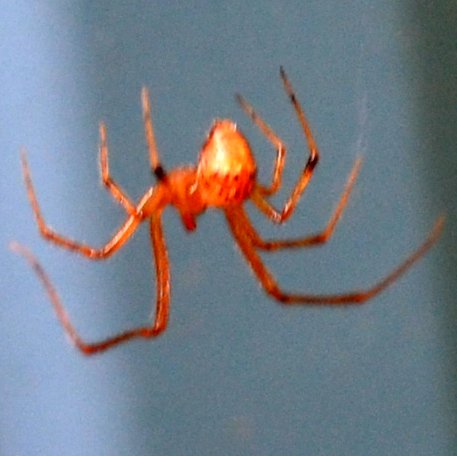
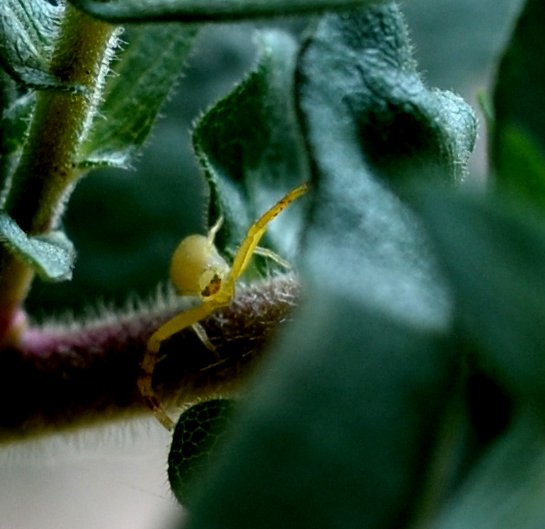
Here is a little Zebra Jumper. Aren't they beautiful? It is followed by a Cross Orbweaver. And that by one I just don't recognize.


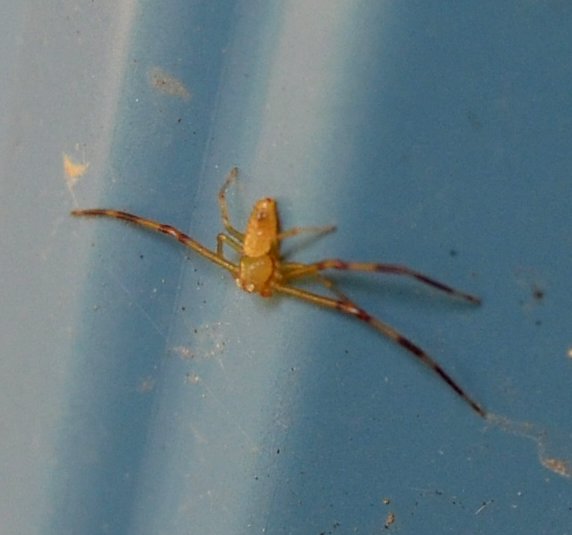
The wasps are beginning to be attracted to the (finally) blooming goldenrod. But here's one that was lolling about on the shop wall. This fuzzy yellow and black one was moving all the time - could it be one of the potter wasps? Oh look! Here's a potter wasp in the just opening goldenrod diner. I'm sorry the wasp is a bit fuzzy - it was very nervous of me and kept hopping from flower head to another. It seems to be something like Eumenes fraternus - and the face tells me it is probably a male E. fraternus.
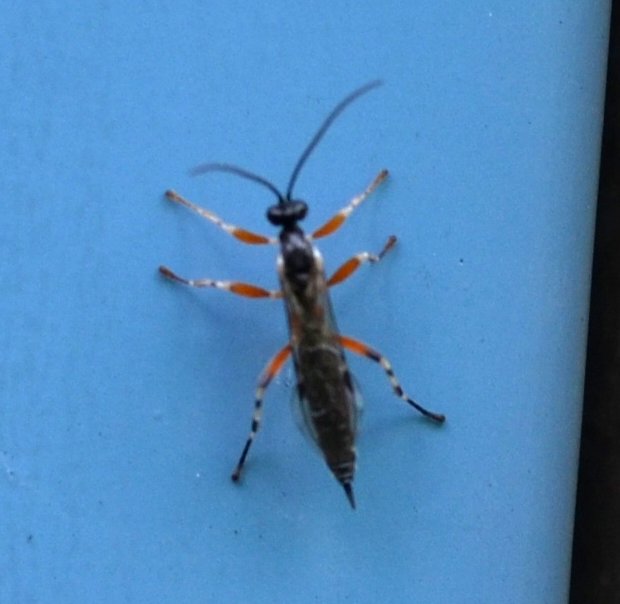
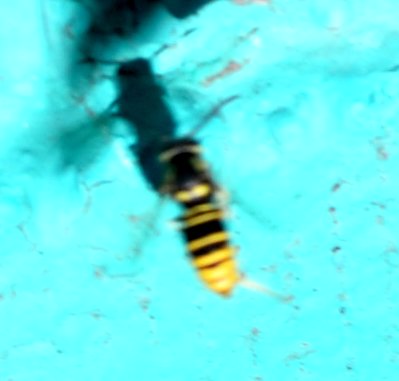

Just a few more shots of flowers posing winsomely: Here are a pair of trumpetvine clusters - they seem to be holding hands!
And a gorgeous thistle blossom! Third is one of the yellowish-greenish-whitish water lilies. The pink one behind it is being shushed by the aster plants pushing it into the water.
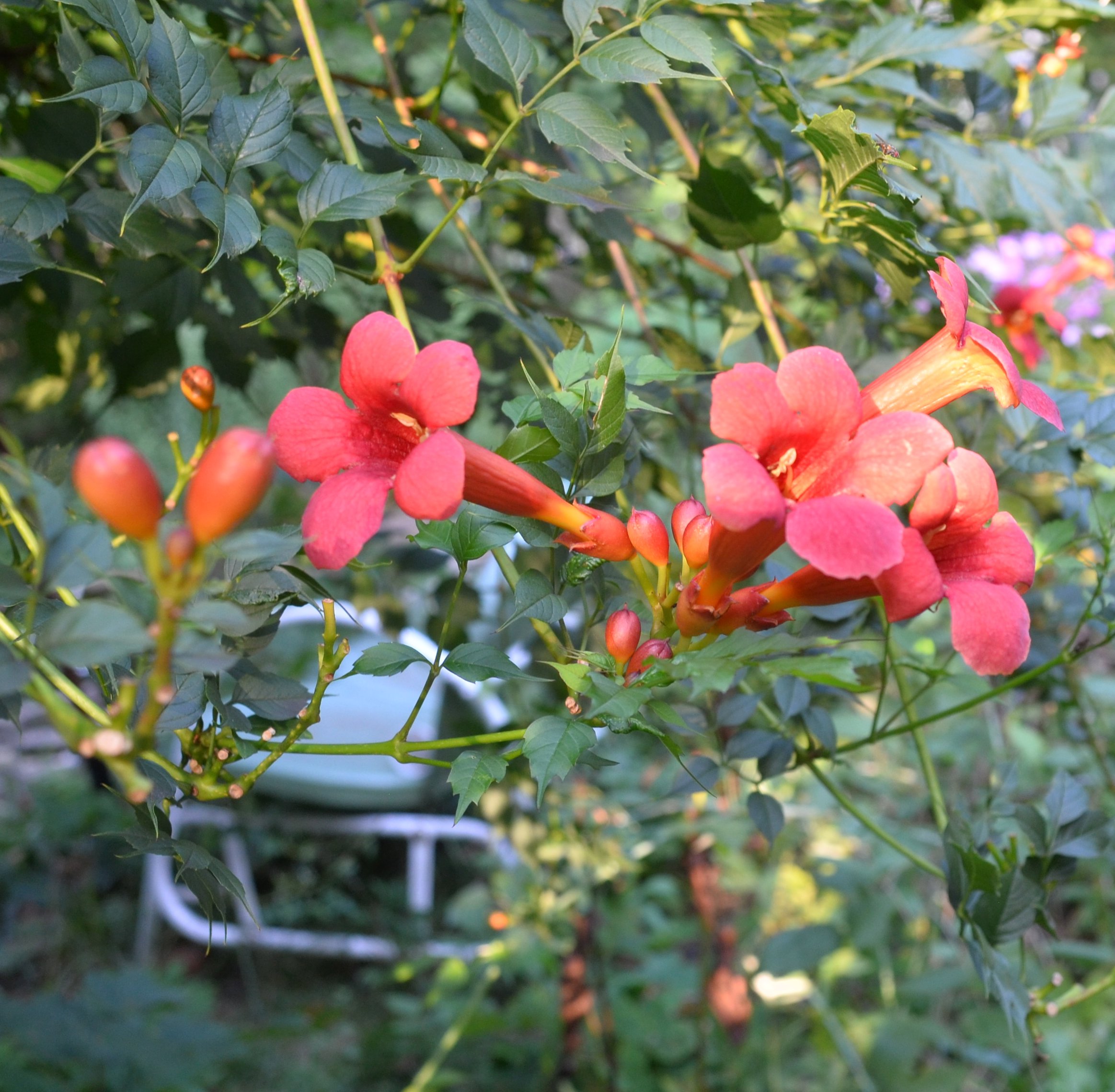
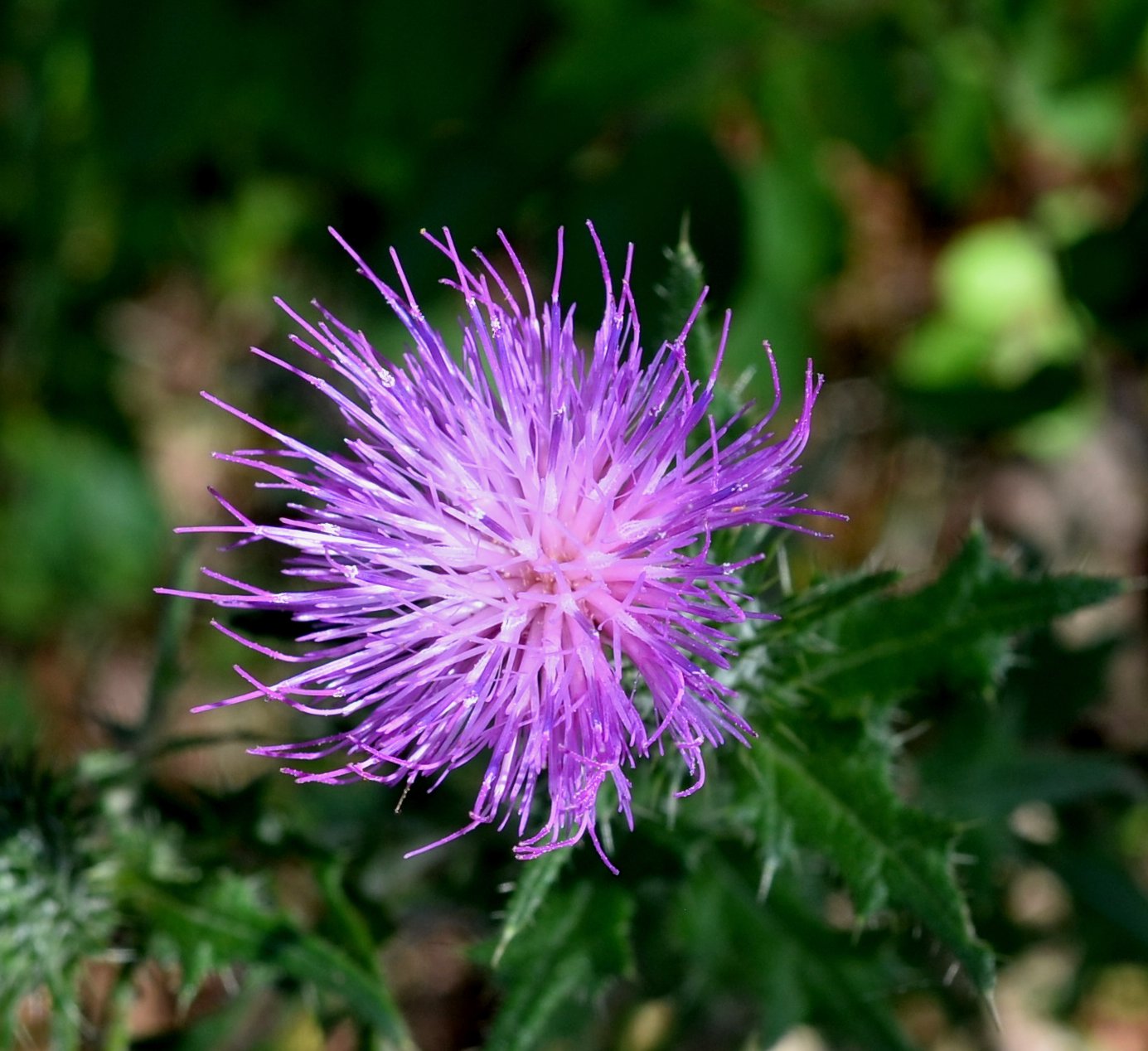
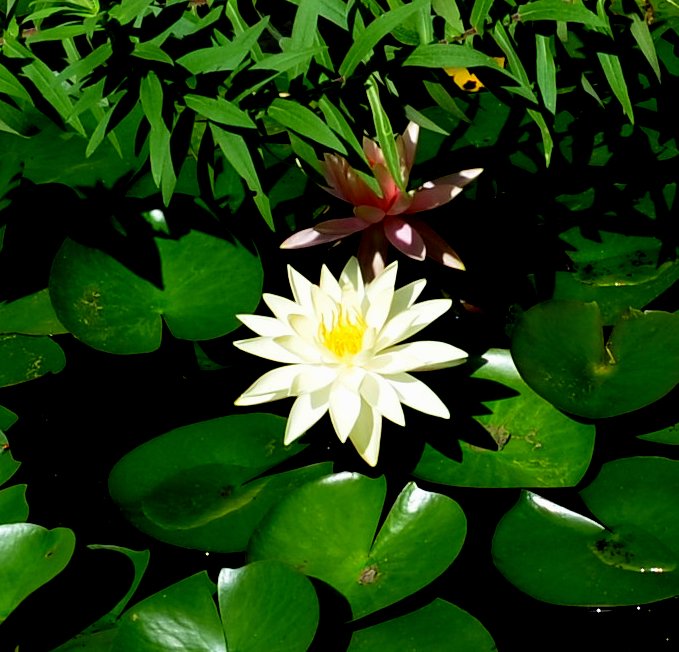
Well, it has been a week and a half since the last blog. I hope you have survived the withdrawal symptoms. It was weird for me not to be writing it. :-) Take care and enjoy what seems to be a summer accelerating towards its end.
Love, Martha
Back to August 6, 2017
Forward to August 27, 2017
Back to 2017 menu
Back to main menu
copyright Martha O'Kennon 2017

































 8 15 17 1.jpg)











 8 12 17 3.jpg)







.jpg)
 8 17 17 1.jpg)




















